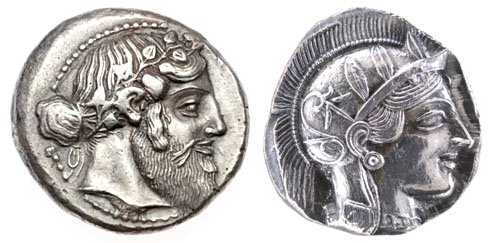Scientists Revisit Healing Properties Of Silver; Tiny Amounts Added To Antibiotics Make Medications 1,000 Times More Effective
By: Kelly York
The mystical medicinal properties of silver — widely used by ancient civilizations — are back in the headlines, as a new study reveals that tiny amounts of the element added to common antibiotics make the medications up to 1,000 more effective in fighting infections.
 The lustrous fashion-forward precious metal could be the medical community’s silver bullet in its battle against drug-resistant “superbugs” — bacteria that has grown immune to standard drugs. Some doctors have feared that superbugs, left unchecked, could make the most common surgeries extremely risky because the arsenal of effective antibiotics is nearly tapped out.
The World Health Organization has warned that “many infectious diseases risk becoming untreatable and uncontrollable.”
The lustrous fashion-forward precious metal could be the medical community’s silver bullet in its battle against drug-resistant “superbugs” — bacteria that has grown immune to standard drugs. Some doctors have feared that superbugs, left unchecked, could make the most common surgeries extremely risky because the arsenal of effective antibiotics is nearly tapped out.
The World Health Organization has warned that “many infectious diseases risk becoming untreatable and uncontrollable.”
 Since the days of ancient Greece, silver has been cherished on so many levels — from fine jewelry and ornaments to currency and utensils. The ancients also discovered that silver had unique healing properties, such as protecting wounds from infection and preserving food and water.
Privileged families in the Middle Ages benefited health-wise from using silver eating utensils even though the side effect was often a bluish-grey discoloration of the skin. These fortunate families became known as “blue bloods.” And North American pioneers routinely dropped silver coins into their drinks to ward off infection on long journeys.
Since the days of ancient Greece, silver has been cherished on so many levels — from fine jewelry and ornaments to currency and utensils. The ancients also discovered that silver had unique healing properties, such as protecting wounds from infection and preserving food and water.
Privileged families in the Middle Ages benefited health-wise from using silver eating utensils even though the side effect was often a bluish-grey discoloration of the skin. These fortunate families became known as “blue bloods.” And North American pioneers routinely dropped silver coins into their drinks to ward off infection on long journeys.
 Silver’s place in the medical community continued all the way until the 1940s, when newly developed antibiotics were favored to fight sickness and infections. Now, 70 years later, the ascension of drug-resistant superbugs has scientists revisiting their old friend silver, the same element that the “Father of Medicine,” Hippocrates, prescribed to treat ulcers in ancient Greece in 400 BC.
Silver’s place in the medical community continued all the way until the 1940s, when newly developed antibiotics were favored to fight sickness and infections. Now, 70 years later, the ascension of drug-resistant superbugs has scientists revisiting their old friend silver, the same element that the “Father of Medicine,” Hippocrates, prescribed to treat ulcers in ancient Greece in 400 BC.
 In a study published in Science Translational Medicine, researchers at Boston University found that by adding trace amounts of silver to common antibiotics, the medications became up to 1,000 times more effective in fighting infections in mice.
“We went from basically no killing to substantial killing,” said senior author James Collins, a professor of microbiology.
The silver attacks bacterial cells in two main ways: It makes the unusually tough cell membrane of superbugs more permeable, and it interferes with the cell’s metabolism. Both mechanisms could potentially be harnessed to make today’s antibiotics more effective against resistant bacteria, Collins said.
Although the experiments have yet to be performed on humans, initial findings are more than promising.
In a study published in Science Translational Medicine, researchers at Boston University found that by adding trace amounts of silver to common antibiotics, the medications became up to 1,000 times more effective in fighting infections in mice.
“We went from basically no killing to substantial killing,” said senior author James Collins, a professor of microbiology.
The silver attacks bacterial cells in two main ways: It makes the unusually tough cell membrane of superbugs more permeable, and it interferes with the cell’s metabolism. Both mechanisms could potentially be harnessed to make today’s antibiotics more effective against resistant bacteria, Collins said.
Although the experiments have yet to be performed on humans, initial findings are more than promising.
 Visit Ben David Jewelers on Facebook
Visit BenDavidJewelers.com
Visit Ben David Jewelers on Facebook
Visit BenDavidJewelers.com
 The lustrous fashion-forward precious metal could be the medical community’s silver bullet in its battle against drug-resistant “superbugs” — bacteria that has grown immune to standard drugs. Some doctors have feared that superbugs, left unchecked, could make the most common surgeries extremely risky because the arsenal of effective antibiotics is nearly tapped out.
The World Health Organization has warned that “many infectious diseases risk becoming untreatable and uncontrollable.”
The lustrous fashion-forward precious metal could be the medical community’s silver bullet in its battle against drug-resistant “superbugs” — bacteria that has grown immune to standard drugs. Some doctors have feared that superbugs, left unchecked, could make the most common surgeries extremely risky because the arsenal of effective antibiotics is nearly tapped out.
The World Health Organization has warned that “many infectious diseases risk becoming untreatable and uncontrollable.”
 Since the days of ancient Greece, silver has been cherished on so many levels — from fine jewelry and ornaments to currency and utensils. The ancients also discovered that silver had unique healing properties, such as protecting wounds from infection and preserving food and water.
Privileged families in the Middle Ages benefited health-wise from using silver eating utensils even though the side effect was often a bluish-grey discoloration of the skin. These fortunate families became known as “blue bloods.” And North American pioneers routinely dropped silver coins into their drinks to ward off infection on long journeys.
Since the days of ancient Greece, silver has been cherished on so many levels — from fine jewelry and ornaments to currency and utensils. The ancients also discovered that silver had unique healing properties, such as protecting wounds from infection and preserving food and water.
Privileged families in the Middle Ages benefited health-wise from using silver eating utensils even though the side effect was often a bluish-grey discoloration of the skin. These fortunate families became known as “blue bloods.” And North American pioneers routinely dropped silver coins into their drinks to ward off infection on long journeys.
 Silver’s place in the medical community continued all the way until the 1940s, when newly developed antibiotics were favored to fight sickness and infections. Now, 70 years later, the ascension of drug-resistant superbugs has scientists revisiting their old friend silver, the same element that the “Father of Medicine,” Hippocrates, prescribed to treat ulcers in ancient Greece in 400 BC.
Silver’s place in the medical community continued all the way until the 1940s, when newly developed antibiotics were favored to fight sickness and infections. Now, 70 years later, the ascension of drug-resistant superbugs has scientists revisiting their old friend silver, the same element that the “Father of Medicine,” Hippocrates, prescribed to treat ulcers in ancient Greece in 400 BC.
 In a study published in Science Translational Medicine, researchers at Boston University found that by adding trace amounts of silver to common antibiotics, the medications became up to 1,000 times more effective in fighting infections in mice.
“We went from basically no killing to substantial killing,” said senior author James Collins, a professor of microbiology.
The silver attacks bacterial cells in two main ways: It makes the unusually tough cell membrane of superbugs more permeable, and it interferes with the cell’s metabolism. Both mechanisms could potentially be harnessed to make today’s antibiotics more effective against resistant bacteria, Collins said.
Although the experiments have yet to be performed on humans, initial findings are more than promising.
In a study published in Science Translational Medicine, researchers at Boston University found that by adding trace amounts of silver to common antibiotics, the medications became up to 1,000 times more effective in fighting infections in mice.
“We went from basically no killing to substantial killing,” said senior author James Collins, a professor of microbiology.
The silver attacks bacterial cells in two main ways: It makes the unusually tough cell membrane of superbugs more permeable, and it interferes with the cell’s metabolism. Both mechanisms could potentially be harnessed to make today’s antibiotics more effective against resistant bacteria, Collins said.
Although the experiments have yet to be performed on humans, initial findings are more than promising.
